The Historic Centre of Macau is a living representation of the city's historic settlement, encompassing architectural legacies interwoven in the midst of the original urban fabric that includes streetscapes and piazzas. These major urban squares and streetscapes provide the linkage for a succession of over twenty monuments and places of worship. These altogether make up "The Historic Centre of Macau".
Don't worry there are signposts all around Macau which will point you to the right direction. Wear comfortable walking shoes and keep a map nearby in case you make a wrong turn and find yourself lost in an alleyway. This walking tour takes about 3-4 hours on foot if you don't go taking photo-ops at every inconceivable corner. :)
1) A-Ma Temple - we started our walking tour by requesting the taxi to drop us at this temple, located on the south-western tip of the Macau Peninsula overlooking Barra Square and the seashore. If you have personal wishes and favors you want to ask the deities, this is the temple to go to. The variety of pavilions dedicated to the worship of different deities in a single complex make the A-Ma Temple an exemplary representation of Chinese culture inspired by Confusianism, Taoism, Buddhism and multile folk beliefs.

2) Moorish Barracks - is just around the corner of the A-Ma temple situated on Barra street. The Moorish Barracks was constructed to accommodate an Indian regiment appointed to reinforce Macau's police force back in the early 1874. We didn't go inside since it was closed at the early hour of 8AM. :)
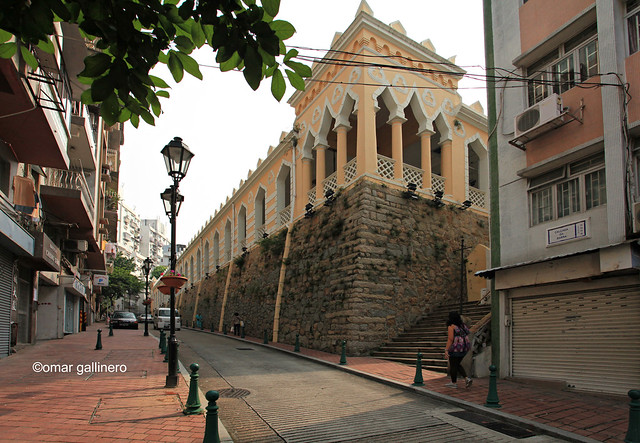
3) Lilau Square - further up the road, the narrow street from the Moorish Barracks suddenly opens to the first Portugese residential quarters in Macau. There are even some houses there that still have inhabitants living and probably maintaining the houses there.
4) St. Lawrence's Church - as we went further up the road, Barra street connects into Padre Antonio St. and Lourenco St. where the St. Lawrence's Church stands. It was a beautiful, church built by the Jesuits in the mid 16th century and one of the three oldest churches in Macao. I love the neo-classical structure and Baroque decorative inspirations of the church, and I found out that the neighborhood where the church is located used to be fairly wealthy thus explaining the scale and wealth of the architectural treatment. Its just too bad that it is not permitted to bring cameras inside the church.. the inside is just as grand as it is on the outside.
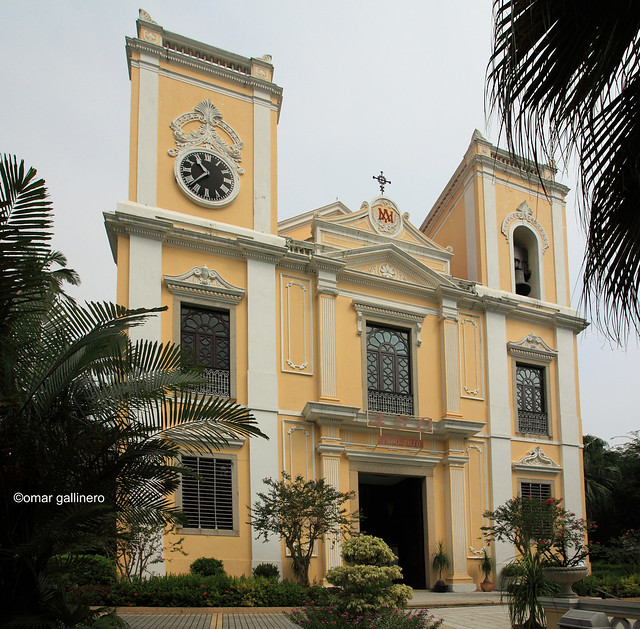
5) St. Augustine's Square - walk alongside the granite wall on Prata St and the adjoining Seminario St. and you will arrive at the junction of Gamboa Lane. Climb up the hill from there and the path will lead you to St. Augustine's Square enclosed by a cluster of monuments. I just had to take a seat at one of the benches there and enjoy the surrounding views. I let hubby snap away with his camera while I take a much needed water break. Public toilets or comfort rooms can be found within the area ( I sense that you are going ask that on my comments section later on :).

6) Dom Pedro V Theatre - this is one of the monuments around the St. Augustine's Square. It is the first western-style theatre in China with a seating capacity of 300.

7) St. Augustine's Church - another magnificent monument in the St. Augustine's Square, this church was established by Spanish Augustinians in 1591. We were so thankful for our trusted tripod at this time that we just had to have a photo ops in it's facade.
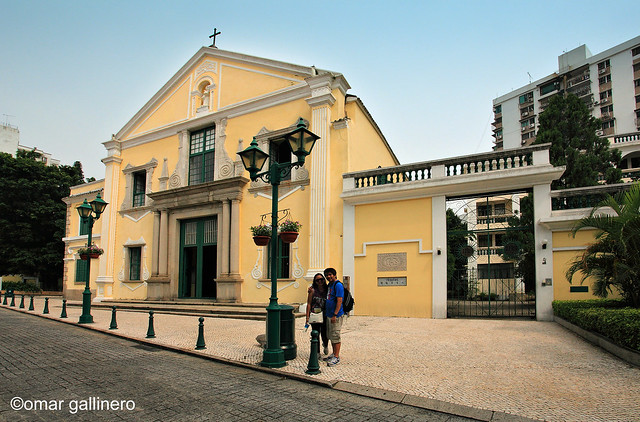
8)Senado Square - moving down Tronco Velho Lane to Almeida Ribeiro Avenue, the narrow streetscape opens into the main city square. It has been Macau's urban centre for centuries and is still the most popular venue for public events and celebrations today. The place is crowded with tourists so be quick to pose and take that picture, no need to be shy since most people there want to do the same thing you are doing. :)

9) Leal Senado Building - situated at one end of the Senado Square, which has a commanding view overlooking the entire square.
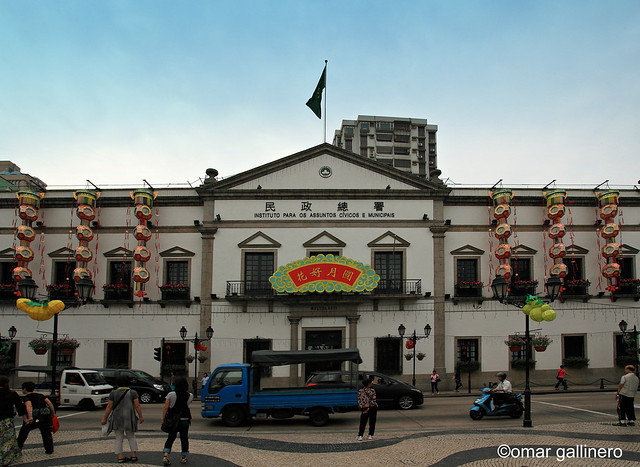
10) St. Dominic's Church - at the junction of Senado Square and St. Dominic's Square is the Lou Kau Mansion (which we didn't explore and took photos of) and the St. Dominic's Church. At the back of this church is a bell tower which has been modified into a small Museum of Sacred Art with a collection of 300 artifacts. If you like museums then its one of the nearest in the area.
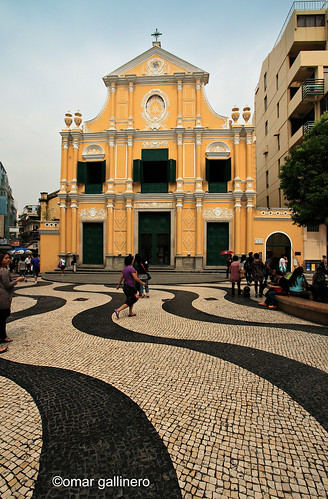 |
| Add caption |
11) Ruins of St. Paul - from St. Dominic's Square, ascend from the base of Mount Hill from this urban piazza along Palha Street and the bluestone cobbled road will lead you to the grand facade of the Ruins of St. Paul. One of the most known landmarks in Macau.

12) The Mount Fortress - just walk to the side of the Ruins of St. Paul and you will arrive at this fortress that covers an area of 10,000 square meters in the shape of a trapezoid with canons dating back to the 1800s.

This is the last stop of our walking tour since we were already famished and lunch was just a few minutes away back to the Senado Square. :)
But if you still wish to continue the tour of the rest of the Historic Centre of Macau... from the Mount Fortress is the miniature Na Tcha Temple and Section of the Old City Walls. Further down the hill, the linear route ends at St. Anthony's Church, The Casa Garden and the Protestant Cemetery. You can choose to hire a taxi or ride the bus to go to the Guia Fortress, Chapel and Lighthouse which stands on the highest hill of Macau which are all visible along the skyline of the peninsula.
Hope that helps you on your next visit to Macau. :)
Notable sources of info: "Macau Guide Book" published by the Macau Tourist Office


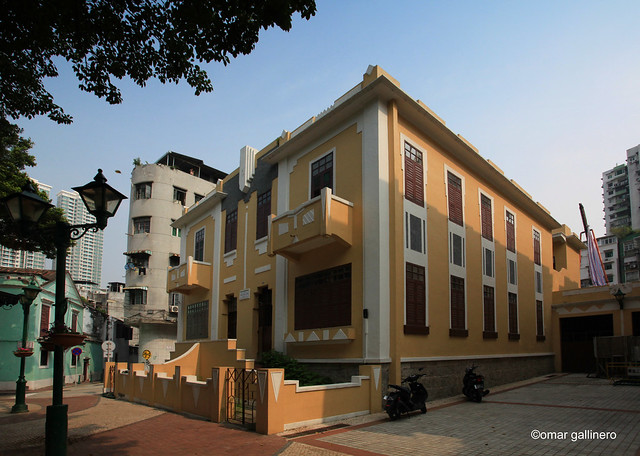
1 comment:
Excellent blog & nice shots!
Post a Comment